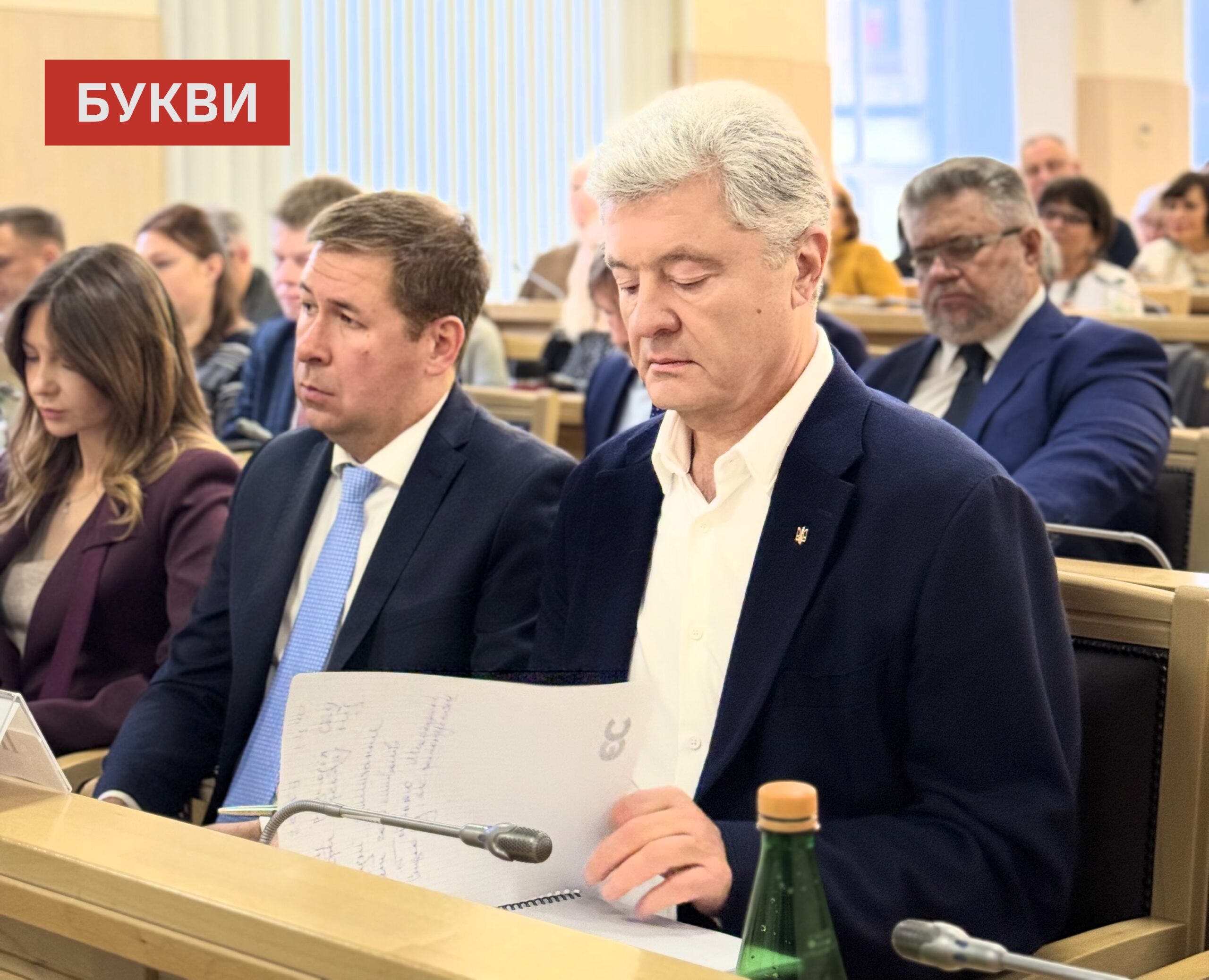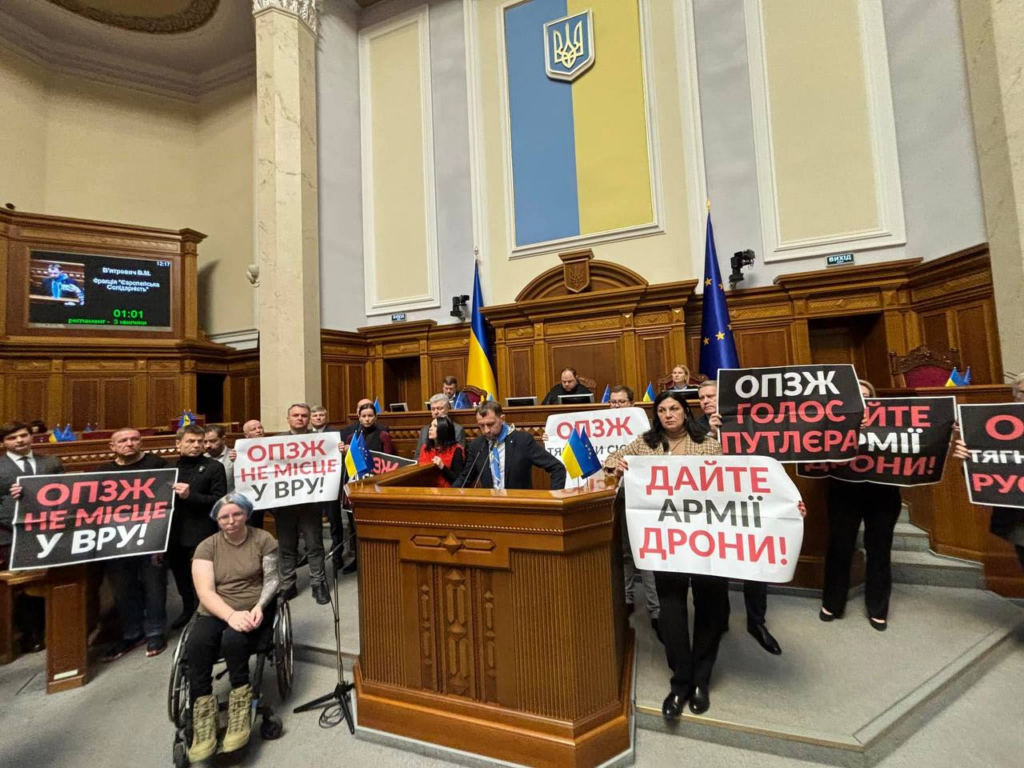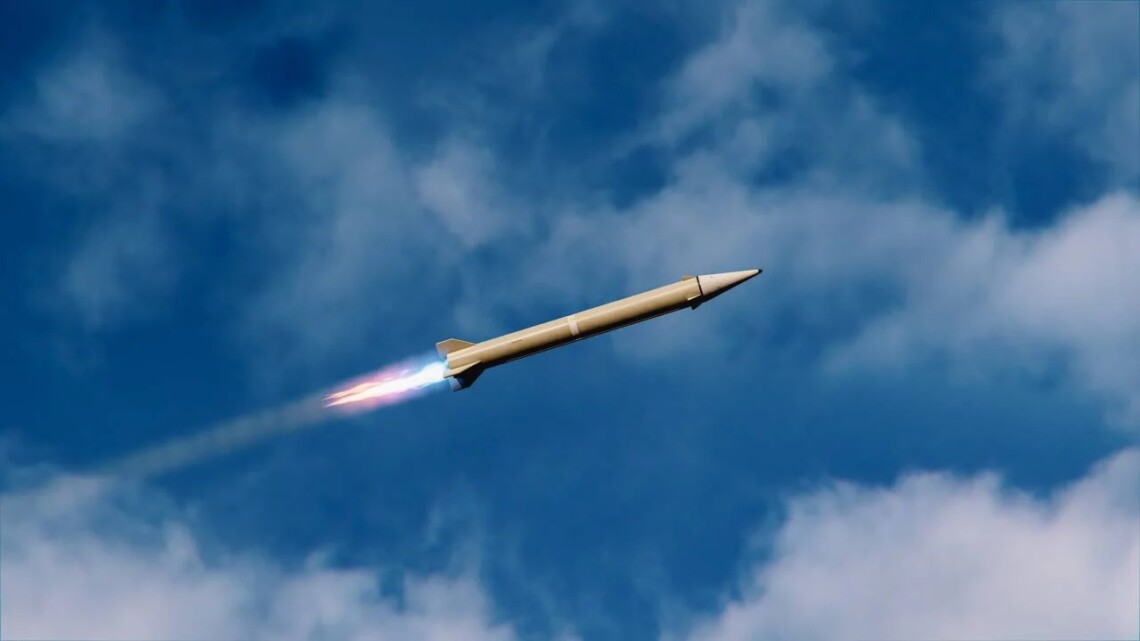A Telegram ban could be traumatic: Otar Dovzhenko on media during war and censorship
By Vladyslava Chorna, Bukvy Editor-in-Chief
Otar Dovzhenko, a media researcher, creative director of the Lviv Media Forum, and former editor-in-chief of “Detector Media,” discussed the current state of Ukraine’s media landscape during the war with Bukvy. He explored the challenges facing Ukrainian media, analyzed how the war has reshaped independent journalism, and addressed a pressing question: Is there strict censorship in Ukraine?
The Impact of the ‘United News’ Telethon
— How does the “United News” telethon currently influence the Ukrainian media landscape, and what long-term effects might it have on informational broadcasting? Can we outline both its advantages and disadvantages, and is it still relevant?
— The joint telethon is essentially a system of mutual broadcasting, involving three major media groups and two smaller channels (previously, Suspilne was also involved, but it has since “expanded its broadcasting,” effectively leaving the marathon). “United News” lacks both a unified editorial board and a coordinator responsible for the content; each participant fills their broadcast hours at their discretion. From a market perspective, this union is as unnatural and pointless as combining Pepsi, Coca-Cola, and Zhivchik. But it is driven by political considerations, so there’s no rush to dismantle the telethon.
The reason private TV channels, along with the state-run TV channel, remain within this joint broadcast is speculative; my hypothesis is that it acts as a safeguard against channel owners—commonly known as oligarchs—who might push their own agendas, undermining the popularity and authority of the current government. Instead of nationalizing these broadcasters (which the martial law allows) and placing them under state management, the government has made them dependent on budget financing.
The radical impact on the informational TV market in Ukraine, which was oversaturated before February 24, 2022, came not so much from the creation of “United News” TV report but from the introduction of the president’s decree in March 2022 that established a “unified information policy.” This decree practically forces news channels to broadcast the telethon instead of producing their own news. As a result, channels that refused to retransmit the telethon—Channel 5, Pryamyi, and Espresso—lost their national digital broadcasting frequencies. These frequencies have not yet been returned, although these media outlets have partially regained their positions through other platforms.
The idea was that viewers would only watch news on one “TV channel,” broadcast simultaneously by many networks—this being “United News.” This applied only to national airwaves, meaning satellite and cable broadcasters could continue producing their news, but the most popular standard in the country, T2, was monopolized. In the first months of the large-scale war, this made sense, as the media space was turbulent and oversaturated with fakes and information operations. It was necessary to provide people with a single official, verified source. But since then, the situation has stabilized, and people have begun seeking alternative sources of information outside the monopolized television—on YouTube, Telegram, and so on.
This artificial merger significantly disrupted the market. Firstly, media groups literally lost their key brands, as their flagship channels began broadcasting mostly foreign content. To save what remained of these brands, media groups launched duplicate channels—ICTV2, “1+1 Ukraine,” and next year, “Inter Ukraine” will start. These broadcasters try to operate in the old format of general-interest channels. Secondly, the most popular news brands in the past—TSN of”1+1,” “Podrobnosti” of “Inter,” “Fakty” of ICTV, and “Vikna” of STB—have been artificially separated from their parent brands. The eclectic nature of “United News” broadcasts has led to viewers not understanding or knowing whose broadcast they are watching. Thirdly, small TV channels controlled by the president’s office—“Rada” and “We Are Ukraine”—received a unique opportunity to broadcast their content on others’ frequencies, reaching an audience they could only dream of under normal circumstances. The content of these channels, compared to other marathon participants, is of the lowest quality and contains the highest share of government PR.
The State of Independent Journalism During the War
— How has the war impacted the development of independent journalism in Ukraine? On one hand, we see that many media outlets, especially small regional ones, have collapsed under the pressure of the war, particularly due to the loss of personnel, funding issues, and both overt and covert censorship. On the other hand, we see Ukrainian photojournalists gaining worldwide fame, and Ukrainian documentaries winning awards at the Oscars.
— There are various factors at play. Speaking about the war that began in 2014, it triggered a crisis that significantly intensified in 2022. For journalism—if we are talking specifically about the work of journalists and their output—this crisis has been a beneficial challenge. New formats have emerged and developed, dozens of professional editorial offices have appeared, including very strong investigative projects that couldn’t have existed before the Revolution of Dignity, and one of the strongest reporting schools in the world. Finally, Suspilne (Public Broadcasting) emerged, something the progressive media community had been fighting for since the late 1990s. This has been, and still is, a period of growing up, self-awareness, and overcoming post-Soviet ailments.
For the media market, the full-scale invasion was a blow. Since the market had been training and adapting to crises for eight years before that, the impact wasn’t as devastating as it could have been. Unofficial estimates suggest that about 200 media outlets out of roughly 5,000 closed down, but many new ones also launched. Grants replaced owner subsidies and advertising revenues, and some media outlets that learned to write grant applications and implement projects even managed to improve their position compared to the pre-war period. However, unfortunately, we are now living in “borrowed time,” mostly paid for by foreign donors who are becoming increasingly selective about whom and how they help. Many media outlets cannot be self-sustaining under the current economic realities, so once they are taken off grant “life support systems,” they risk dying.
And let’s not forget the losses. The war has claimed the lives of dozens of journalists, both civilians and those who volunteered to defend Ukraine with weapons. Dozens are currently in captivity. Media outlets in occupied territories have lost their property and connection with their audience; some had to start from scratch in evacuation. Media in liberated territories must rebuild what the war destroyed. The human potential of the industry has suffered greatly due to mobilization and the emigration of many media workers abroad.
In short, Ukrainian media remain unbroken and resilient, but they have taken a beating and are chipped, and it will take years to recover.
Confronting Russian Disinformation and the Role of Telegram
— Does the state effectively use available strategies to counter Russian disinformation? And does it manage the growing social tensions effectively? The notion that any discontent is “all Russian IPsO” has become a meme on social media—so, is accusing someone of propaganda really effective?
— Regarding so-called information-psychological special operations, I always repeat the words of expert Dmytro Zolotukhin: “If you’re talking about IT, then IT isn’t this information warfare” Information influence operations happen in such a way that if we recognize them, it’s too late.
The state effectively neutralizes Russian disinformation on our territory, using both open and less-talked-about means. The special services worked particularly well in the first weeks of the large-scale war, quickly silencing Russian agents and preventing them from spreading the call “let’s capitulate to save lives.” But Russian special services are not amateurs either. They adapt, move into the gray zone—Telegram, TikTok, and other international platforms where countering disinformation is less effective. Most information influence campaigns now take place in social networks and messengers, and here, counteraction is difficult to call effective. At least because it’s uncoordinated and reactive. For example, first, a large number of videos discrediting the Territorial Recruitment Centers appear. Then the authorities responsible for the information war start thinking about who’s to blame and what to do about it. By the way, we’re now seeing much less discussion and promotion of “busification,” draft dodging, and scandals with forced mobilization on social networks—I think that’s because Russia has stopped putting effort into it. After all, nothing much has changed, and the problems remain unresolved.
It’s important to consider that the Ukrainian media space is inconvenient for implementing Russian information operations. It’s decentralized, pluralistic, and people are used to combining different information sources rather than believing just one. Ukrainian media can be compared to a “mosquito fleet”—many small, adaptive, flexible players who unite when needed but have no single center. Operations that would work in some totalitarian state have an annoying but not devastating effect in Ukraine. I can’t imagine what kind of “disinformation warfare” could truly destabilize Ukraine, let alone push us to capitulate.
Censorship and Self-Censorship in Ukrainian Media
— Have you noticed censorship and self-censorship in the Ukrainian media space that goes beyond the necessary restrictions for wartime?
— There is no censorship in Ukraine, and there hasn’t been for the last twenty years, if we use the term in its literal sense. Of course, there are media owners and political patrons who dictate to dependent editorial offices what they can’t cover. But not everyone does this, not always, and in the current situation, with no elections in sight, businessmen and politicians have little motivation to pressure journalists. In my opinion, this is the freest period in the history of Ukrainian media.
There are legal restrictions on freedom of speech dictated by martial law. I find them quite liberal—they could be much stricter; moreover, in reality, no one is seriously punished for violating them. I think that in the history of humanity, there have been few instances where, in a country fighting a war on its territory, the media had so much freedom.
Self-censorship exists—it was particularly noticeable in the first months of the large-scale war when media workers were disoriented and couldn’t answer the question themselves about which professional standards apply and which don’t in wartime. But over time, everything settled down, and now, I think, the media suffers much less from self-censorship.
By the way, self-censorship didn’t only concern coverage of government actions, politicians, or the military but also everyday things. For example, whether it was appropriate to write about movies, music, or travel during the war. That’s why, in the first months, so many journalistic pieces started with a preface-apology: “There’s a war in the country, but we still need to rest or eat well, so here’s a story about a resort or culinary recipes…”
The Role of Media in Addressing Social Issues During Wartime
— Should the media play along with state censorship and avoid raising difficult social issues, even if the public demands it? For example, the often scandalous and illegal actions of TCC staff towards people. On one hand, official agencies either ignore these issues or claim that it’s the way it should be. The president, who is legally responsible for mobilization, has “washed his hands.” But on the other hand, there are Ukrainians who have suffered, and there’s a whole group of men, boys, and their families who live every day in fear of becoming victims of the unlawful and brutal behavior of TCC representatives.
— If a journalist or media outlet adheres to standards, such questions simply don’t arise. Whether to cover a topic or not is a matter of relevance and importance, not political considerations. If specific conscirpiton employees violate people’s rights, it can and should be reported, while also thoroughly understanding the situation, listening to primary sources, ensuring a balance of opinions, avoiding unfounded assumptions, and providing context. For example, one contentious incident occurs among hundreds of completely legal and peaceful mobilizations. And not extrapolating the actions of individuals to an entire institution.
Some media outlets use the highly important and sensitive topic of conscription campaign for society to increase traffic: they publish video recordings of military personnel chasing or restraining civilians without context, balance, with emotional headlines and comments. Unfortunately, these media outlets play into Russian propaganda. In such a situation, journalistic work should start by clearly understanding who the people in the video are, who shot the video, where and when; finding all parties, getting their comments, and understanding how events unfolded.
The Threat of Telegram and Digitalization in the Ukrainian Media Landscape
— Can the full-scale war be considered a catalyst for digitalization in the media in Ukraine, and how has this affected the accessibility of information for the population?
— I don’t know the statistics, but I think so—people have started using smartphones, mobile internet, and messengers more. Just look at restaurants and cafes, where you can view the menu only by scanning a QR code with your smartphone camera. Another example is the mandatory electronic queue at the conscription offices; you can’t even get into the military enlistment office without using the internet. At the same time, due to power outages and disruptions in mobile communications, especially in frontline areas, people have realized how dependent they’ve become on digital technologies. In these areas, old-school newspapers, leaflets, and radio, which can be listened to on battery-operated receivers, are relevant again.
However, it’s important to understand that people who have started using the internet in recent years—especially retirees, pre-retirement age people, and those with low education levels—are the most vulnerable to disinformation. They’re used to taking things at face value; for them, “what’s written in the newspaper is the truth”—and this applies, for example, to anonymous Telegram channels and Viber chats. Therefore, it’s especially important now to focus on media literacy for older generations who have just started mastering digital technologies. In Ukraine, however, the focus is traditionally on schoolchildren and youth when talking about media literacy—the generation that grew up with smartphones in their hands.
— What’s the threat of Telegram channels in the culture of media and in countering Russian propaganda?
— The main threat of Telegram now is its ubiquity. Telegram has become the “new television” in the sense that most Ukrainians use it as a source of information, just as they used to with TV. At the same time, it’s also a means of communication for a large part of society. Now this platform is firmly embedded in Ukraine’s “information metabolism”; government agencies, military units, charitable foundations, and media use this messenger to communicate with their audience. Meanwhile, everyone remembers that the company is opaque, accountable to no one, and owned by a Russian, so the likelihood that Russian intelligence has access to user data and can interfere with the service is high. Still, this is typical of so-called “nonlinear warfare”—you use enemy infrastructure and give the enemy access to yours if you consider it situationally advantageous. A striking example is Ukraine’s gas transmission system, which continues to pump gas from Russia to Europe.
Blocking Telegram could be traumatic for Ukraine and disrupt many communications essential for victory, survival, and recovery. However, it’s not worth overdramatizing this: over time, these communications would recover on other platforms.
It’s difficult to counter disinformation on Telegram because the platform practically doesn’t respond to requests related to toxic content. Pavel Durov declares radical views on “freedom of speech,” bordering on permissiveness. The only thing Ukraine can realistically threaten Telegram with is a complete ban, but this is difficult to implement, and the consequences would be severe. For example, where would we all watch what’s flying where and whether it was shot down?
State Efforts to Combat Disinformation on Telegram
— Does it seem that the state is genuinely trying to fight against Telegram channels, as many officials claim? Because while on one hand, some restrictions are indeed announced, on the other hand, officials give interviews and repost Telegram channels, legitimizing them. Could this inconsistency reveal that the so-called fight against Telegram channels is just an attempt to push them into cooperation? After all, when it comes to channels with hundreds of thousands or millions of subscribers, the owners of these channels might find it easier to cooperate rather than lose their income sources. The political PR or black campaigns against opponents, which are clearly not done for free, look particularly strange amid the public outcry over Telegram.
— Special services can indeed combat specific hostile or criminal Telegram channels by finding their administrators and bringing them to justice. For example, there have been statements that law enforcement managed to shut down channels that reported where mobile concsription raids were handing out summonses. As for hostile channels managed from Russia or outside Ukraine, there’s little that can be done. As for anonymous Telegram channels that masquerade as Ukrainian but are actually coordinated by Russian intelligence, this was clear even before the full-scale invasion, but unfortunately, they continue to operate.
The first thing the government should do to start a real fight against the toxic influence of Telegram in Ukraine is to shut down its official channels, moving them to safer (or at least non-Russian) messengers. But this is not in the interest of politicians and officials because they would lose their audience and influence. So they threaten, do nothing, and simultaneously cooperate with resources like “Trukha,” and in the end, no one takes these talks seriously.
As for the cooperation between the administrators and owners of anonymous Telegram channels with the government (politicians, officials, oligarchs, etc.), it undoubtedly happens—we see certain channels suddenly becoming loyal to specific individuals, groups, or government bodies, or vice versa, suddenly starting to criticize someone. But a Telegram channel is a specific asset, and “ownership” is a relative concept. A person can transfer access, change passwords—and suddenly the channel has a new “owner,” perhaps outside Ukraine, where no administrative pressure can threaten them. In the past, the government could revoke the licenses of TV channels and radio stations if they didn’t comply or turned opposition; they could confiscate newspaper or magazine circulation, physically shut down an editorial office, and seize servers. But what can you do with a Telegram channel that was yours yesterday and someone else’s today? For our politicians, who still think within the framework of Kuchmism, this will be too difficult.
— Why, then, doesn’t the state raise the threat of TikTok at the official level, which has a recommendation mechanism that successfully promotes Russian propaganda (unlike Telegram, where most information is in channels you choose yourself)? Moreover, TikTok’s protection mechanism is much weaker than Telegram’s, and when it comes to the Russian origin of Durov, we can also mention the cooperation between Russia and China.
— I wouldn’t say that people and organizations fighting disinformation underestimate the threat of TikTok (and YouTube, by the way, and Reels on Facebook and Instagram—any mass short-form user-generated video). This danger is discussed at industry conferences, and it is kept on the radar of special services. But to make claims about the volume of disinformation, we need regular, thorough research. And researching video is harder than text, and the results of studies using AI algorithms are less accurate. After all, video conveys information through sound, on-screen text (subtitles), and moving images. Therefore, we have a lot of accurate knowledge about disinformation on Telegram, but much less about TikTok.
I’ve been in negotiations with representatives of technology platforms. When our negotiators start talking about the need to counter disinformation, they say, “Oh, yes, we’re also against disinformation! We’ve improved our rules and algorithms, take a look at what we’ve done…!” And it’s hard to tell whether it’s more hypocrisy or naivety.
At the same time, let’s be honest: in this whole story about fighting disinformation, we’re only interested in one kind of disinformation: Russian, aimed against Ukraine. If it suddenly disappeared, we would hardly care about how many false statements, distorted images, and deepfake videos exist on a given platform. But for tech platforms, anti-Ukrainian disinformation is just a part of the complex problem created by many players. China, Iran, North Korea, radical Islamists, and with the approaching U.S. elections, disinformation and manipulation related to the rivalry between the two presidential candidates come to the forefront… Considering all this, I’m not surprised that we’re not achieving quick results in this fight. Let’s not give up, but let’s also not shoot sparrows with a cannon: information warfare is secondary, so efforts and resources should first be directed to supporting the real front.
Military serviceman of the International Legion for the Defense of Ukraine with the call sign “Paradox” is the crew commander of the American M113 armored personnel carrier. He is a master at using it and is constantly improving, because the legionnaire’s skills are tested every day in battle. You have to drive to the front lines, often under artillery fire and drone attacks.
Notorious supporter of the concept “in order for a cow to eat less and give more milk, it needs to be fed less and milked more” “Servant of the People” Danylo Hetmantsev, under the guise of “business requirements”, registered a draft law on the collection of VAT on all foreign purchases, regardless of their value. In other words, every Ukrainian, buying goods of any value and purpose abroad, when sending them to Ukraine, will have to pay an additional fifth part, or 20% of the cost of the goods.
When Russian missiles began barraging Ukrainian cities in the first moments of the full-scale invasion,…
On the last Saturday of November, Ukraine commemorates the victims of the Holodomor of 1932–1933…
By Vladyslava Chorna, Bukvy Editor-in-Chief Otar Dovzhenko, a media researcher, creative director of the Lviv…




